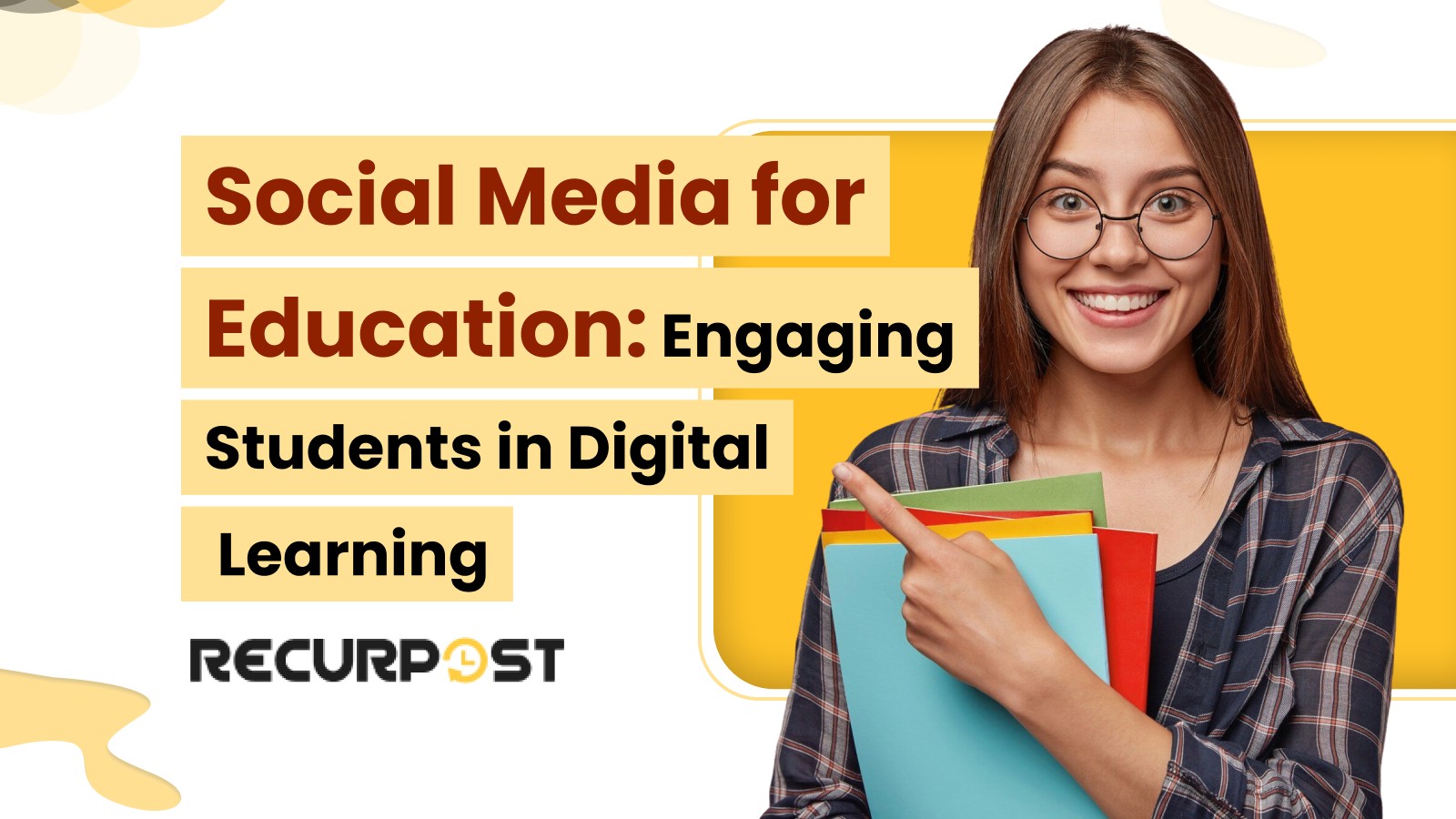How do you hook students when screens brim with distractions? Social Media for Education turns social media into a classroom by using Facebook groups, Instagram stories, and other platforms to hold students’ attention.
This method increases student engagement by integrating lessons with social media platforms. Students develop digital literacy while teachers receive real-time feedback on learning progress. Social Media for Education builds the digital skills students need for future careers.
The following sections cover core principles, platform playbooks, digital tools, and metrics tips: examples and common challenges. A simple checklist at the end helps you take action today.
Foundations of Social Media–Driven Learning
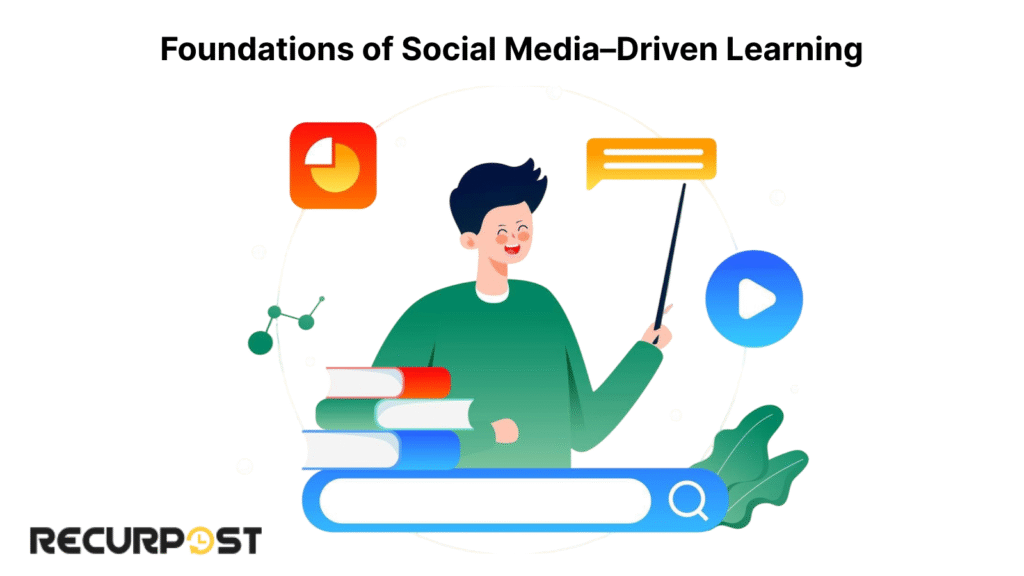
Digital Pedagogy 101
Social Media for Education uses social media platforms to teach, sparking digital literacy and boosting student engagement.
Setting Clear Objectives
Choose one specific goal, such as higher course completion rates or improved student learning outcomes. Link each social media activity directly to that goal, while tracking metrics demonstrates progress and provides accountability.
Understanding Your Audience (ICP Focus)
Agencies, SMEs, freelancers, and educators each require tailored communication approaches. High school students respond to visual posts, while coaches prefer live Q&A sessions. Content customized for specific audiences maintains engagement and enhances professional development.
Core Benefits & Value Proposition

Collaboration & Peer Learning
Social platforms foster collaboration in educational settings where group chats and tagged discussions encourage active participation. Students develop trust and teamwork through peer review workflows.
Digital Literacy & Communication Skills
Hands-on content creation builds digital literacy skills while increasing engagement. Students learn to post articles, create educational videos, and use digital tools, developing skills essential for lifelong learning and career readiness.
Real-Time Feedback & Adaptivity
Instant polls, quizzes, and hashtag threads provide real-time feedback on student progress. Educators adjust lessons using analytics from digital platforms, maintaining a responsive and inclusive learning environment.
Platform-By-Platform Playbook
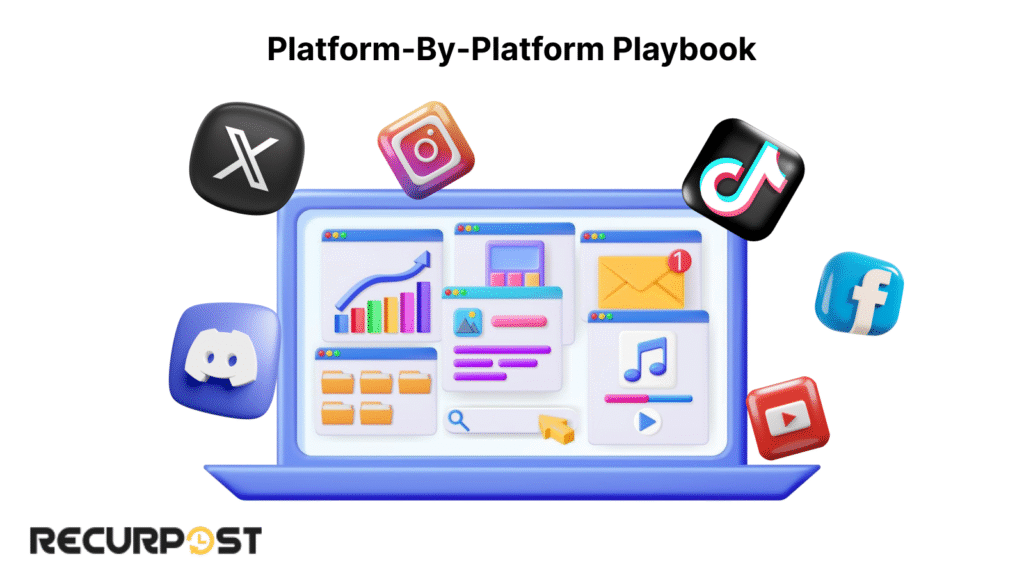
- Use private groups for class-specific accounts and threaded discussions.
- Sample activity: post a weekly question and ask students to comment.
- Tip: Schedule posts with RecurPost to keep content steady.
- Run weekly educational campaigns with class hashtags.
- Sample activity: share a short thread with three tips on a topic.
- Tip: Live chats boost active participation in under 15 minutes.
- Share carousels with image slides that explain lessons.
- Sample activity: ask students to create a story showing a concept.
- Tip: Post relevant articles as link stickers in stories.
YouTube
- Upload short lectures and group them into playlists.
- Sample activity: assign students to comment on their takeaways.
- Tip: Add timestamps so students can find sections fast.
TikTok
- Create 15–60 second micro-lessons with text overlays.
- Sample activity: Challenge students to make a short video summary.
- Tip: Use popular audio to boost visibility in digital classrooms.
Discord
- Set up channels for voice chats and text threads.
- Sample activity: host weekly office-hour drop-ins for Q&A.
- Tip: Pin educational resources in each channel for quick access.
This platform-specific approach enables effective implementation across various social media channels.
Tools & Content-Workflow Framework

Planning & Scheduling
Posts are mapped in weekly sprints where RecurPost queues and recycles content on social media platforms, maintaining active digital classrooms with minimal manual effort.
Design & Multimedia Creation
Canva Education and Adobe Express enable quick creation of visuals and educational videos that increase engagement and enhance the learning environment. Templates can be saved for future use.
Feedback & Assessment
Flipgrid and Mentimeter function as interactive learning tools for polls and video responses where students post content and peers provide feedback, building digital literacy and supporting learning.
Analytics & Reporting
Tracking likes, comments, shares, and quiz scores on each platform generates valuable data that Google Data Studio or native dashboards transform into clear reports. Educators use this real-time feedback to make adjustments that improve student progress.
Measuring Success

Select key metrics to measure social media effectiveness in education, where post-interaction rates demonstrate student engagement levels and course completion rates, with quiz scores revealing learning gains.
Monitor hashtag usage, comments, and shares on social media platforms as these metrics indicate student participation in posting articles and joining discussions. Digital literacy growth measurements reveal skill development from tool usage.
Data extracted from native dashboards or Google Data Studio provides weekly snapshots that reveal emerging trends, while monthly comprehensive analyses optimize digital classrooms for improved student outcomes.
Governance & Digital Citizenship
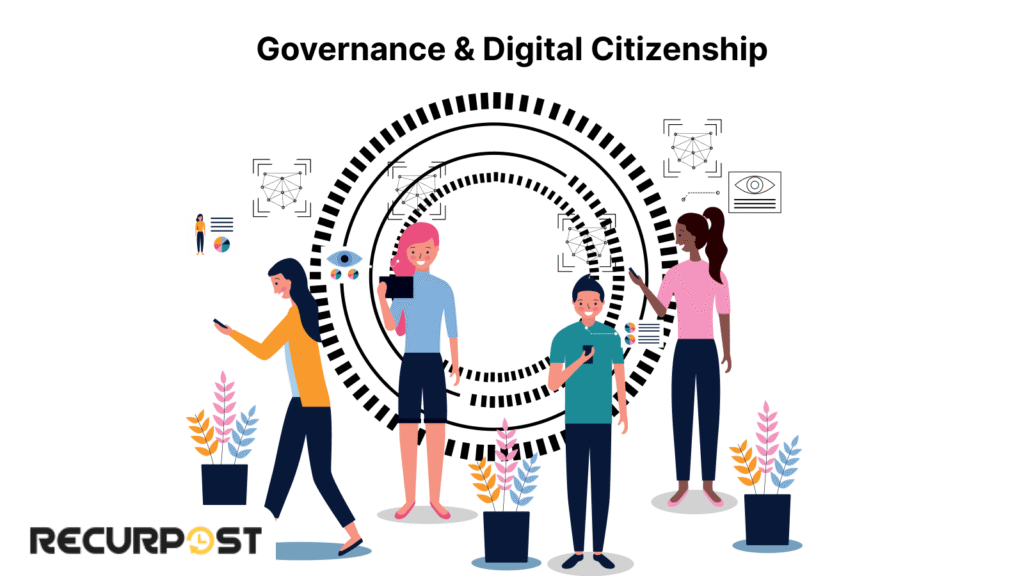
Privacy & Consent
Obtain parental sign-off and student permission before sharing posts, which ensures student data security in digital environments.
Community Guidelines
Establish a code of conduct for online discussions with clear rules on respectful comments and hashtag usage to shape an inclusive learning environment.
Ethical Posting
Teach students to cite sources and identify misinformation on social media platforms, strengthening digital literacy and building trust.
Examples & Templates

Example 1: Agency Campaign
A coding course’s private Facebook group increased engagement by 60% over eight weeks through weekly live Q&A sessions and instant polls that maintained student participation.
Example 2: SME Roll-Out
An Instagram story and carousel series for a cooking class boosted course sign-ups by 20% in two months. Visual assignments provided practical skill application opportunities.
Example 3: Freelancer Toolkit
A TikTok micro-lesson series on digital marketing gained 10,000 followers in six weeks. Visual assignments provided practical skill application opportunities.
Example 4: Coach Blueprint
A Discord server with voice and text channels hosted weekly mastermind sessions. Collaboration and substantive discussions drove higher participation rates.
Template:
- Channels: announcements, lessons, Q&A
- Schedule: topic threads Mon–Wed, live voice chat Fri
- Resource pins: articles, educational videos, digital tools links
Common Challenges & Solutions
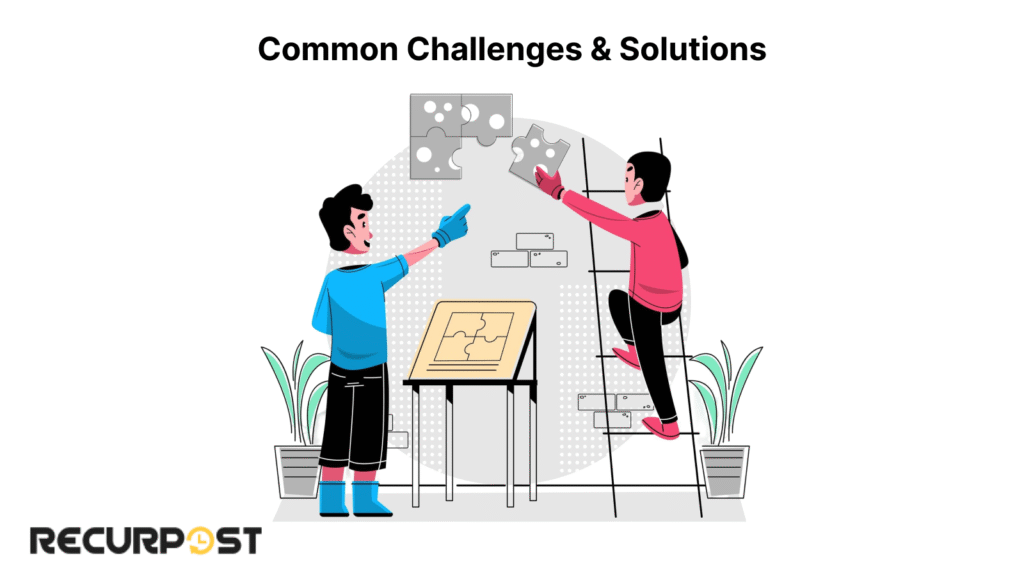
Over-Automation vs Authentic Interaction
Excessive automation appears impersonal. Balancing scheduled posts with live interactions creates authenticity. This balanced approach maintains authentic student engagement.
Platform Mis-Match
Social platforms must be matched to specific class needs. Selecting two platforms that align with student preferences optimizes results. Testing enables rapid refinement of platform selections.
Equity & Access
Internet and device access vary among students. Providing downloadable resources and offline meetups addresses access limitations. This approach creates an inclusive learning environment.
Content Overload
Excessive posting can overwhelm students. A structured schedule with diverse formats prevents content fatigue. This strategy maintains content freshness and enhances learning outcomes.
Privacy Concerns
Student work sharing requires careful consent management. Class-specific accounts with restricted settings protect privacy. Parental sign-off and clear guidelines protect everyone.
Future Trends & Innovations
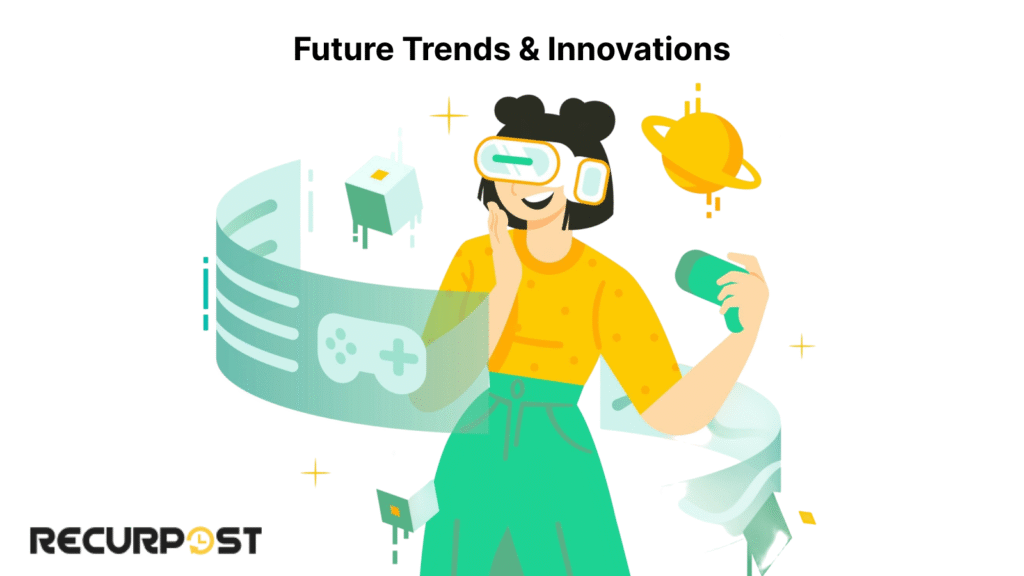
Immersive AR/VR Experiences
Immersive technology enables virtual exploration of labs and historical sites. Social Media Education and Engaging Students in Digital Learning may soon include AR filters on Instagram or Snapchat. These technologies create engaging virtual classroom experiences.
AI-Driven Personalization
AI personalizes content for individual learning paces. Chatbots on social platforms answer questions at any time. This personalization increases engagement and accelerates digital literacy development.
Blockchain Credentialing
Blockchain can track student progress and lock their achievements securely. Digital certificates on social media platforms show skills to prospective students or employers. This approach enhances credibility in educational credentials.
Micro-Learning & Short-Form Content
Short-form video lessons are emerging as effective interactive learning tools. Snappy videos fit today’s fast-scroll habits. Digital tools facilitate incremental daily learning experiences.
Voice & Live Streaming
Discord and Facebook Live sessions enable remote student participation. Live Q&A or stream lectures build real time feedback loops. Teachers can make real-time lesson adjustments to improve student outcomes.
The Role of Artificial Intelligence in Social Media-Driven Learning
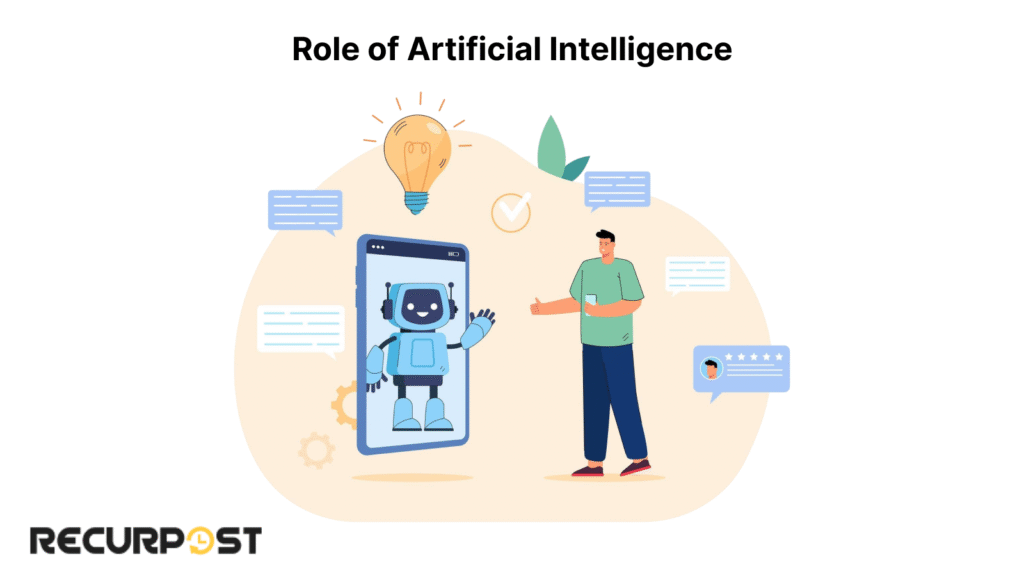
AI enhances social media-driven learning through personalized, efficient, and engaging educational experiences. AI-powered tools can analyze student interactions on social media platforms, providing real time feedback and helping educators tailor content to individual learning needs. AI chatbots provide immediate answers, assignment guidance, and personalized resource recommendations based on student progress.
AI-driven analytics help educators monitor engagement and identify students needing additional support. Automated grading and feedback free up teachers to focus on more meaningful interactions, while students benefit from immediate responses that keep them motivated. Integrating AI into educational technology creates adaptive learning environments that enhance digital literacy and learning effectiveness.
Collaborative Learning through Social Media Platforms
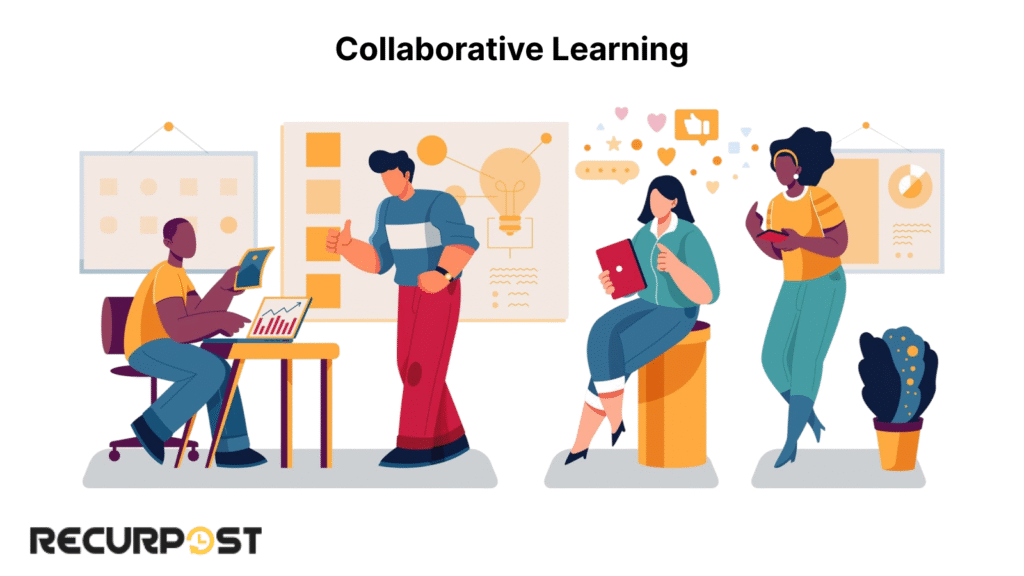
Students connecting, sharing, and building knowledge together strengthen collaborative learning. Social media platforms facilitate group projects and online discussions. Educators create class-specific accounts on platforms like Facebook and Twitter to structure learning activities.
These communities enhance engagement and digital literacy through peer feedback. Educational institutions encourage students to exchange industry knowledge in live chats or LinkedIn groups. This strategy enhances digital learning experiences.
- Select two social media platforms and establish class-specific accounts.
- Build a four-week content calendar with posts, polls, and video prompts.
- Define three key metrics, such as post interactions, quiz scores, and course completion.
- Draft privacy consent forms and community guidelines for your online classes.
Gamification & Motivation Techniques
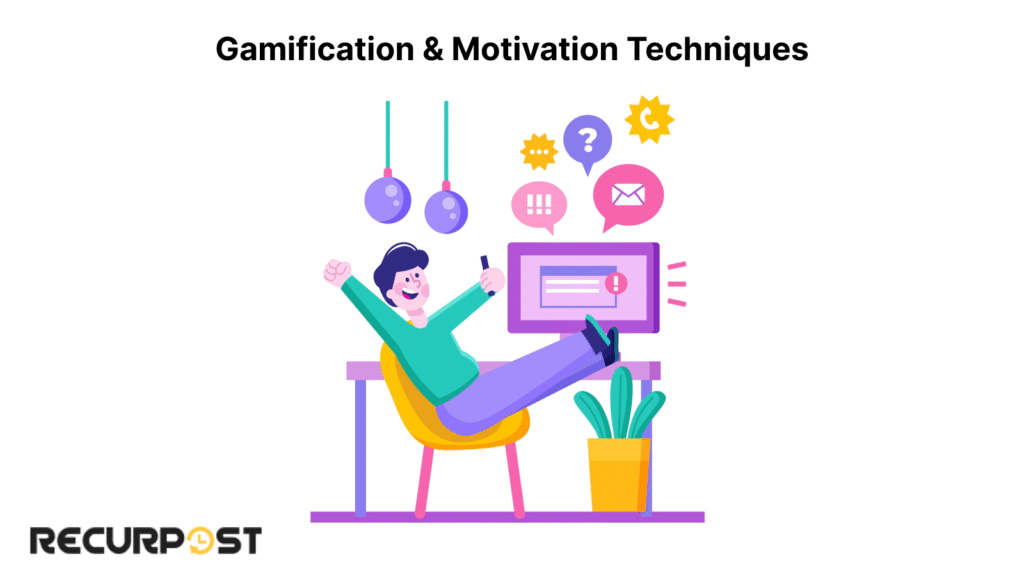
Badges, leaderboards, and point systems motivate students in online courses. These initiatives promote collaborative learning and increase engagement through participation rewards. Technologies that track progress and recognize achievements maintain student interest. Gamification supports educational objectives and maintains student motivation throughout the academic year.
Accessibility & Inclusive Design
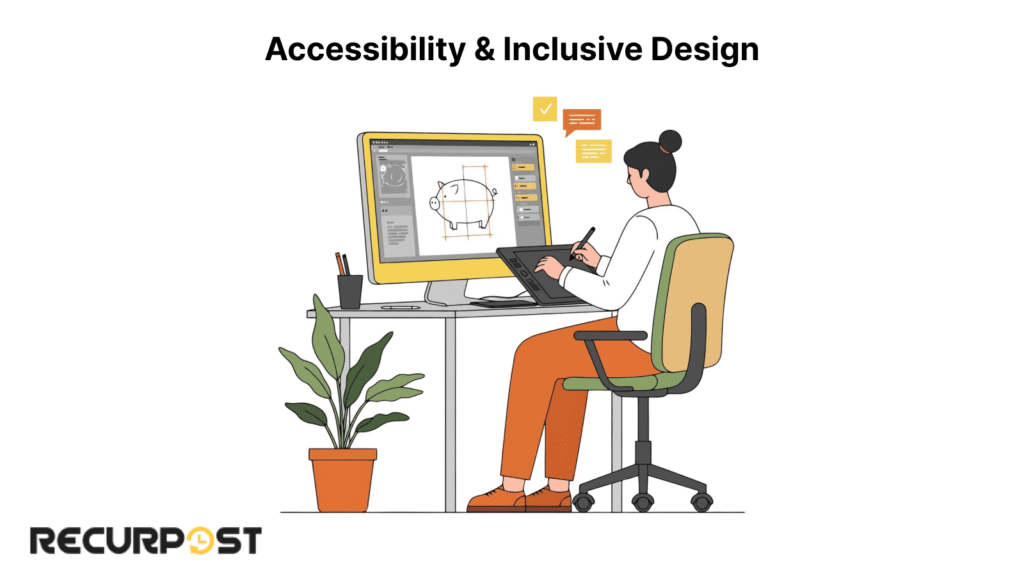
Technology integration requires ensuring universal resource accessibility. Adding captions to educational videos, alt text on images, and mobile-first layouts supports language learning and students with diverse needs.
Educational institutions can create class-specific accounts under strict privacy settings to prevent excessive social media use while protecting undergraduates and high school students. Offering downloadable educational materials for offline access helps build an inclusive learning environment and respects the education system’s compliance requirements.
Conclusion & Next Steps
Social media platforms can function as effective classroom environments. This approach increases engagement, builds digital literacy, and provides immediate feedback. This method benefits agencies, SMEs, freelancers, and educators.
This article covers principles, platform strategies, tools, and measurement approaches with examples demonstrating social platforms’ effectiveness in education.
Select one tactic from the action plan for an initial pilot, then document and share results with stakeholders.
Frequently Asked Questions
1. How do I train teachers for Social Media Education and Engaging Students in Digital Learning?
Provide workshops covering platform fundamentals and moderation tools.
2. What’s the budget needed to start social media–driven lessons?
Match new users with experienced mentors for practical training. Plan for small fees on scheduling tools (like RecurPost) and premium design apps (like Canva Pro).
3. How can I integrate social media activities into an existing LMS?
Integrate social feeds or hashtag displays into LMS interfaces. Connect posts to lesson modules for integrated navigation.
4. How do I handle negative or off-topic comments?
Establish explicit guidelines and regular moderation protocols. Address rule violations promptly and reinforce community standards.
5. Can younger students use social media for learning safely?
Implement closed groups and robust privacy settings. Obtain parental consent for minor participation.
6. How do I report ROI to agency clients or SME leaders?
Present comparative metrics on engagement, completions, and lead generation. Connect metrics to specific business objectives.
7. What if students lack devices or internet at home?
Offer offline materials and QR-accessible resources at school. Implement device lending programs or establish on-site computer labs.

As a passionate content writer, I love blending creativity with research to craft compelling narratives that inform, engage, and inspire. With a strong focus on user engagement and brand communication, I create content that resonates with the audience and drives meaningful interactions.
